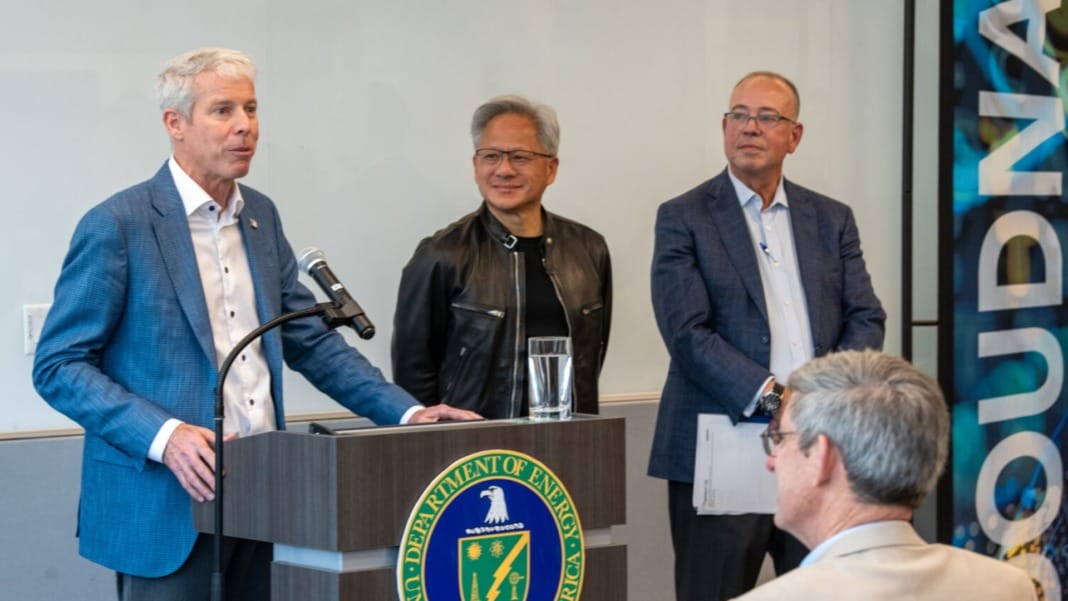A new supercomputer named Doudna, designed by Dell Technologies and powered by NVIDIA’s upcoming Vera Rubin platform, has been announced at Lawrence Berkeley National Laboratory in California. Built to drive major breakthroughs in fields like fusion energy, astronomy, and molecular biology, the system is set to become one of the most advanced tools in the United States for accelerating scientific research.
The supercomputer, also known as NERSC-10, honours Nobel laureate and CRISPR pioneer Jennifer Doudna. It represents a significant national investment in high-performance computing (HPC), providing researchers with powerful AI-driven tools to solve pressing global challenges.
Speaking at the launch event, U.S. Energy Secretary Chris Wright said, “It will advance scientific discovery from chemistry to physics to biology and all powered by — unleashing this power — of artificial intelligence.”
Built for scale, speed and integration
Doudna stands out from traditional systems by combining simulation, data and AI into one integrated platform. Set to go live in 2026, it is designed to support more than 11,000 researchers across the U.S. Department of Energy’s (DOE) most critical scientific missions. The system will be linked to experimental facilities through the Energy Sciences Network (ESnet), allowing scientists to stream and analyse data in near real-time.
NERSC Director Sudip Dosanjh explained, “The Doudna supercomputer is designed to accelerate a broad set of scientific workflows,” highlighting its real-time responsiveness and seamless connectivity.
Nick Wright, lead architect of Doudna and head of the advanced technologies group at NERSC, added, “We’re not just building a faster computer. We’re building a system that helps researchers think bigger and discover sooner.”
Expected advancements include fusion simulation for clean energy, AI-assisted materials design, rapid drug discovery, and real-time astronomical data processing. Doudna is projected to outperform its predecessor, Perlmutter, by over tenfold in output, while only consuming two to three times more power. This results in a three to five times increase in energy efficiency, driven by innovations in chip design and system architecture.
Enabling AI breakthroughs across disciplines
Doudna is positioned to fuel AI-powered research across a wide range of scientific areas. Notable use cases already underway include:
- David Baker, a 2024 Nobel laureate, who used NERSC systems to apply AI in designing novel protein structures.
- Benjamin Nachman, who is using AI to correct distortions in particle physics data.
- A collaboration between Berkeley Lab and Meta, which led to the creation of the “Open Molecules 2025” dataset, using AI to model chemical reactions. The researchers involved continue to rely on NERSC systems for their models.
The system will also support scalable quantum computing research, using platforms such as NVIDIA CUDA-Q, and enable hybrid HPC and quantum workflows. More than 20 research teams have already begun migrating their projects to Doudna as part of the NERSC Science Acceleration Program.
NVIDIA’s Vera Rubin platform, which underpins Doudna, is built to handle these workloads by combining high-performance CPUs and tightly connected GPUs using NVLink technology. This unified architecture enables efficient data sharing between processors, essential for modern AI and scientific workloads.
A real-time engine for national research
Doudna’s design integrates directly into scientific workflows across the DOE’s national labs. The ESnet network will facilitate low-latency, high-bandwidth data transfers from instruments such as genome sequencers, telescopes, and fusion detectors.
For example, at the DIII-D national fusion facility, data will stream in directly from the control room into Doudna. This allows researchers to run plasma models in real time and adjust their experiments on the fly.
“We used to think of the supercomputer as a passive participant in the corner,” said Wright. “Now it’s part of the entire workflow, connected to experiments, telescopes, detectors.”
Jennifer Doudna expressed her surprise and pride at having the system named in her honour, adding, “I think we’re standing at a really interesting moment in biology,” and noting the increasing collaboration across different scientific fields.
As Jensen Huang, founder and CEO of NVIDIA, put it, “It is the foundation of scientific discovery for our country. It is also the foundation for economic and technology leadership.”
Accelerating the pace of scientific breakthroughs
Doudna is expected to play a key role in delivering faster results from high-impact scientific research. With its official deployment planned for 2026, it will serve researchers from institutions such as Fermilab and the Joint Genome Institute.
“This isn’t a system for one field,” said Wright. “It’s for discovery — across chemistry, physics and fields we haven’t imagined yet.”
Summing up the potential, Huang described Doudna as “a time machine for science,” compressing years of research into days and giving scientists the computing power needed to address the world’s toughest challenges.





